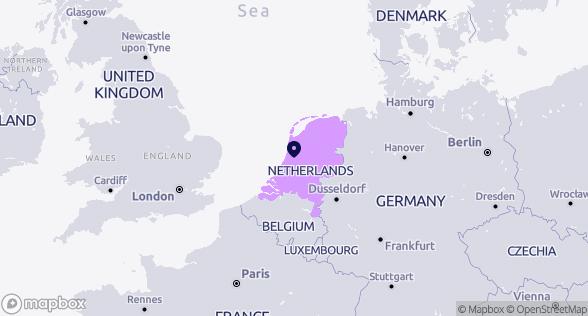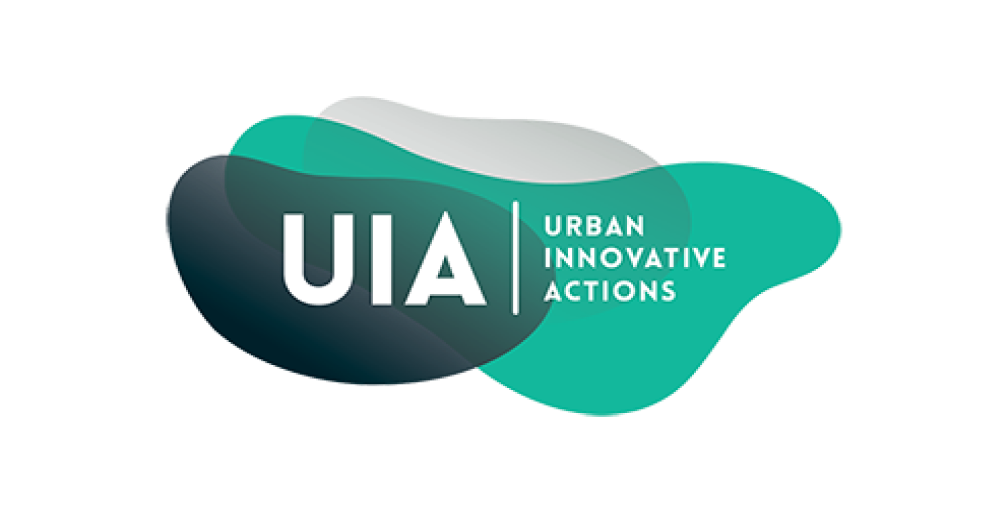
Amsterdam
Netherlands
RESILIO, Amsterdam
The RESILIO project addressed pluvial flooding by reducing the speed of water runoff through the installation of blue-green roofs on a range of building types but predominantly in social housing. The ‘blue’ refers to the runoff effect whereby water is stored on the roof during heavy rainfall and released before the next heavy rainstorm is forecast. The ‘green’ refers to the vegetation growing in a substrate above the water storage and which contributes to biodiversity in the city. Blue-green roofs are just two of the functions of multi-functional roofs, which also include solar energy and, sometimes, can provide safe social spaces at an affordable cost. The project’s target to create 10 000m2 (the size of two football pitches) of blue-green roofs was exceeded by 2500m2. The project also reduced the runoff in times of heavy rain in key locations, created a localised cooling effect in upper floors, and benefitted biodiversity.
RESILIO included a programme of engagement with local communities to explain the project on the ground by visiting local shopping centres and other community facilities and schools. The project used a cargo bike with a mini version of a blue-green roof as a teaching aid in local streets to illustrate the layers of the roof: (crate tanks, substrate and vegetation).
This is a case study as part of an UIA report. You can access all of the project's resources on its project collection page.
2. Amsterdam and Just and Green Transitions
2.1 What are the implications for Amsterdam?
Amsterdam has several key policies for climate change adaptation and resilience. It also has a circular economy strategy. Its strategy for blue/green roofs falls under its Climate adaptation strategy. It also has a ‘Rainproof’ policy, which guides approaches to reducing flooding. Rainproof has been a springboard for all kinds of projects (both public and private) aiming to make the city more resilient to extremely heavy downpours. The city routinely takes the rain-proofing principle into account in management and maintenance work in the public sphere. This makes it possible to resolve ‘rainwater bottlenecks’ (areas at greater risk of waterlogging and water damage) more quickly. In addition, Amsterdam has a Hoosbui (Heavy Downpour) emergency protocol. This is a roadmap that enables the Waternet water company’s crisis management team to respond to incidents promptly in the event of extremely heavy downpours. The city is also making efforts to limit flood risks and to spotlight heat and drought risks to a greater extent. The blue-green roofs project fits into this policy. Other initiatives that are being taken alongside blue-green roofs include: ‘hollow streets’ in which tunnels under roads are built with significant storage capacity; intensive drainage; local decoupling of paved surfaces from the sewer network; and infiltration schemes.
Amsterdam’s Climate adaptation policy does not go into details about vulnerable groups except to note that in the event of heatwaves the health concern focuses on the elderly and that these groups will be targeted through outreach.
Finally, as Amsterdam has been selected to take part in the 100 Climate Neutral Cities programme, it might further develop its adaptation strategy under this programme.
2.2 What barriers has Amsterdam faced implementing the just & green transition?
The main barrier Amsterdam faces in implementing just transitions in relation to climate adaptation has been finance. Like all cities, the annual budget is limited, and this means that not everything needed to address climate adaptation is affordable in the short term. For the blue-green roofs, the housing companies could reduce costs by identifying buildings that would need to have major roof works carried out as part of the cycle of maintenance. The additional costs of the blue-green roofs were covered by the ERDF grant. Without the grant, the roofs could not have been converted.
A second barrier facing Amsterdam was that, as an already developed city, the opportunities for climate actions are circumscribed by the existing urban form. Structures built in the 20th century had lower energy insulation ratings, and were fitted with gas, electric, or fuel-based heating systems. Retrofitting is more expensive to implement than building energy-efficient systems into a new building. The same is true of the urban space overall. For example, fitting hollow streets, whereby water storage areas are created under roads, is cheaper to do when the street is first being laid out. Adapting existing streets to create water storage is expensive and causes major disruption to traffic and pedestrians.
Regarding implementing blue-green roofs in RESILIO, the main barrier that the city faced is that not all roofs were created equal. Roofs need to be flat to within one degree and be sufficiently strong to bear the additional weight of the water storage infrastructure. Although this weight is within the limits set out in building regulations, which specify a loading requirement in the event of heavy snowfall, it turned out in practice that one of the selected roofs was not strong enough for the proposed tanks. A substitute roof had to be found, and this caused some delays.
3. How does RESILIO promote the just & green transition?
The RESILIO project promotes just transitions by prioritising the neighbourhoods with the highest level of water stress, i.e., those most likely to flood during heavy rainfall. It was possible to identify these neighbourhoods on existing maps.
The project then focused on social housing in these target areas, so this prioritised apartment buildings with lower-income residents. To a degree, the social housing apartment buildings were selected because they were in semi-public ownership through the housing companies. Objective indicators of water stress were used to identify which areas to focus on in the first pilots. These tended to be in inner city areas, which are more densely built-up and lack green space for infiltration.
4. Keys to success
a. Getting the right people and skills on board
It is vital to having the right partners around the table. These included the housing companies, which owned the buildings, project management partners used to working with professional building managers on construction projects, and specialist companies with valve technologies and knowledge partners in the University able to collect and analyse data on pluvial and heat aspects.
In addition, bringing the owners of buildings together with specialist partners to design and manage the building process established confidence that the roofs could be converted successfully. Effective project management and coordination were also necessary in what was a technically complex project.
b. Ensuring an efficiency public procurement process
The city organised a public procurement process with the housing companies to ensure compliance with rules and that the building works would be completed to a high standard.
c. Maintaining constant outreach & dialogue with the public
Keeping the public informed and involved through a consultation and participation process at ground level, and at roof level by using demonstrator projects such as the roof of the innovation lab, which has public access to show groups how the blue-green roofs work in practice.
d. Modelling the rain
Complex data analysis and modelling was made possible by the involvement of the University and Metropolder. They installed sensors and from this data developed computer models to apply to flooding back to 2013 to show how the blue-green roofs would have contributed to reducing pluvial flooding in previous crisis events.
5. Scaling up and replication potential
The project’s aim was to carry out a large-scale test of the smart blue-green roofs in such a way that significant data could be collected on the city’s performance in flood water mitigation and in cooling the upper floors. The project was successful in these aspects and the data was used to produce a business case based on a cost-benefit analysis for future blue-green roofs in the city. It can be replicated by other cities.
Amsterdam itself has 96 localities at risk of flooding. The three other largest cities in the Netherlands: Rotterdam, Utrecht and the Hague are also at elevated risk of flooding and could benefit from blue-green roofs. Blue-green roofs can mitigate the impact of runoff by holding back water that is stored on the roof until it is safe to release it.
There has been interest from other cities in the Netherlands. In addition, cities in other countries have expressed an interest and there has been engagement with German cities, including Berlin and Hamburg. The project won the World Economic Forum award in Spring 2022, as an innovation that brings nature back into cities.
About this resource
The Urban Innovative Actions (UIA) is a European Union initiative that provided funding to urban areas across Europe to test new and unproven solutions to urban challenges. The initiative had a total ERDF budget of €372 million for 2014-2020.
Similar content






Want to replicate this urban practice in your city?
Apply to an EUI City-to-City Exchange
Connect with a peer city who can bring you solutions and expertise and apply together to receive EUI support
More infos on EUI websiteBrowse existing Innovative Actions looking for Transfer Partners and cities willing to do a City-to-City Exchange looking for peers